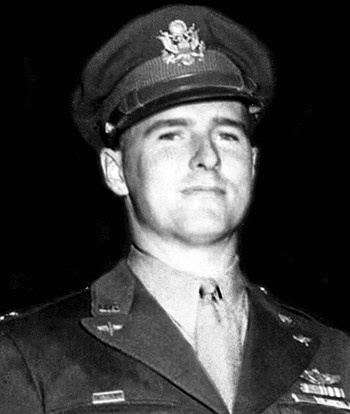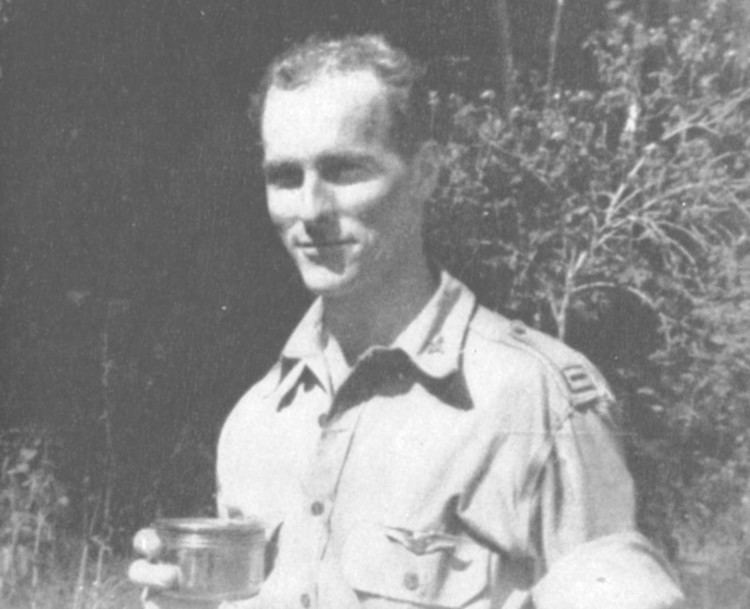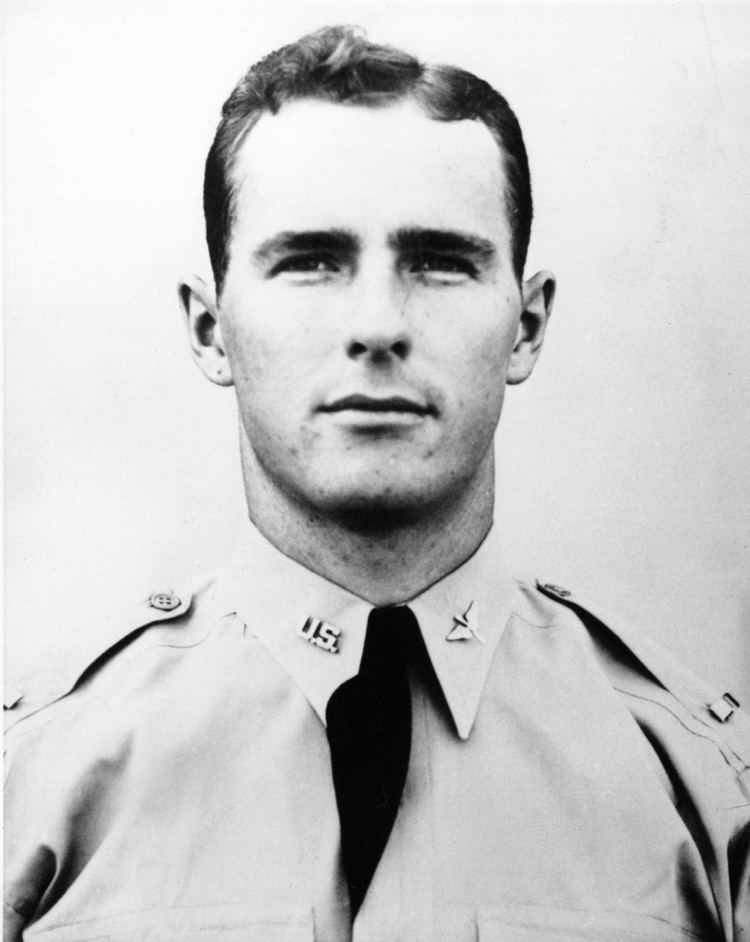Nickname(s) "Ed" Rank Lieutenant colonel Name William Dyess | Allegiance United States | |
 | ||
Born August 9, 1916Albany, Texas ( 1916-08-09 ) Books Bataan Death March: A Survivor's Account Battles and wars | ||
William Edwin "Ed" Dyess (August 9, 1916 – December 22, 1943) was an officer of the United States Army Air Corps during World War II. He was captured after the Allied loss at the Battle of Bataan and endured the subsequent Bataan Death March. After a year in captivity, he escaped and spent three months on the run before being evacuated from the Philippines by a U.S. submarine. Once back in the U.S., he recounted the story of his capture and imprisonment, providing the first widely published eye-witness account of the brutality of the Death March. He returned to duty in the Army Air Forces but was killed in a training accident months later.
Contents

Early life and career

Born and raised in Albany, Texas, son of Judge Richard T. and Hallie Graham Dyess. Dyess attended Albany High School where he played football and ran track and field. He graduated from high school in 1934 and from John Tarleton College in Stephenville, Texas, on May 18, 1936. He was a distant cousin of fellow World War II veteran Aquilla J. Dyess.
Dyess underwent flight training at Kelly and Randolph Fields in San Antonio, Texas, and was commissioned second lieutenant in the United States Army Air Corps in 1937. Promoted to first lieutenant and command of the 21st Pursuit Squadron at Hamilton Field, San Francisco, Dyess led the squadron to Nichols Field, Manila, Philippines, in November 1941.
Bataan
The 21st Pursuit Squadron was assigned to the 24th Pursuit Group which together with the 19th Bomb Group suffered heavy casualties during the opening of the war with Japan in 1941. Flying P-40 Warhawks against superior Japanese types, Dyess maintained his unit's morale in the face of staggering losses during the Battle of Bataan. When his squadron ran short of aircraft, Dyess transitioned to an infantry officer, serving in this capacity during the Battle of the Points.
When the Bataan Peninsula fell to the Japanese, Dyess, as commanding officer, refused to abandon those of his squadron who could not be evacuated. He gave his airplane ("Kibosh") to another fighter pilot, Lieutenant I.B. "Jack" Donaldson, for last bombing run on 9 April, after which Jack was ordered to fly it to Cebu, where he crash landed. Dyess also supervised the evacuation of Philippine Army Colonel Carlos Romulo, a close friend of General Douglas MacArthur who would survive the war and would later serve as President of the United Nations General Assembly.
Dyess was captured by the Japanese on April 9, 1942, north of Mariveles, Bataan, and the next morning, he and the others who surrendered at Bataan began the infamous Bataan Death March. He was imprisoned at Camp O'Donnell and then, from June to 26 October 1942, at Cabanatuan. There, he and his men were routinely denied the rights of prisoners of war.
Dyess and others were transported by ship, the Erie Maru, to the Davao Penal Colony on Mindanao, arriving November 7. After two months of planning and preparation, Dyess, along with nine other American POWs, including Major Jack Hawkins, Austin Shofner, and Samuel Grashio, and two Filipino convicts escaped from Davao on April 4, 1943. It would be the only large-scale escape of Allied POWs from the Japanese in the Pacific Theater during World War II. Dyess and his group spent several weeks evading pursuit, then joined a group of guerrillas for several months. The group decided to split up, with seven joining organized guerrilla forces in northern Mindanao. Dyess and two others were evacuated by the U.S. Navy submarine Trout to Australia in July 1943.
Upon reaching the United States in August, he was thoroughly debriefed on his experiences as a POW by high-ranking military brass. He was ordered to recuperate, in Sept. 1943, at the Ashford General Hospital in White Sulphur Springs, West Virginia. From his hospital bed, Dyess worked with Chicago Tribune writer Charles Leavelle to tell the story of the atrocities and brutality he and his fellow POWs had experienced and witnessed while in Japanese captivity. The U.S. Government, however, refused to release Dyess' story for publication on the grounds that it would infuriate the Japanese and risk the death of remaining American prisoners. The Tribune had to wait another four and a half months for the Secretary of War to grant release of the story.
Death and legacy
Promoted to Lieutenant Colonel, Dyess was assigned to fly P-38 Lightnings in preparation for a return to combat. On December 22, 1943, his aircraft, P-38G-10-LO Lightning, 42-13441, of the 337th Fighter Squadron, 329d Fighter Group, lost an engine caused by a fire on take-off from Grand Central Airport. Dyess had a chance to abandon his troubled aircraft but was flying over a heavily populated area and didn't want to be responsible for any civilian casualties. He remained in his stricken P-38 and died while guiding it onto a vacant lot.
He is buried in Albany cemetery, Texas.
Almost one month after his death, the Chicago Tribune finally received permission from government censorship offices to release the deceased aviator's story on January 28, 1944. The story ran in serial form for several weeks and was picked up by over 100 American newspapers. According to Leavelle, it was the biggest story of the war since Pearl Harbor. Published in book form in 1944, The Dyess Story (later retitled Bataan Death March) became a bestseller.
Among other commendations, Dyess received the Distinguished Flying Cross and Distinguished Service Cross. In 1957, Abilene Army Airfield was renamed Dyess Air Force Base in his honor. His personal papers are archived at Maxwell Air Force Base in Alabama and the special collections archive at Texas Tech University in Lubbock, Texas.
Military Decorations
His awards and decorations include:
USAAF Pilot Badge
Army Presidential Unit Citation
Philippine Republic Presidential Unit Citation (Army Version)
